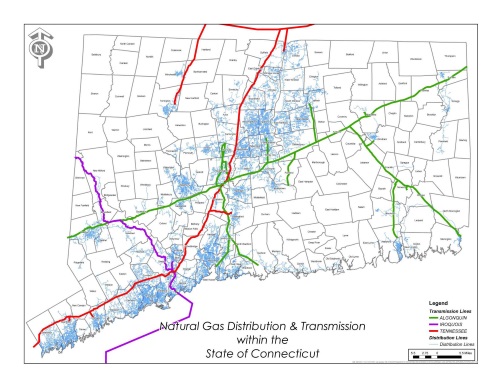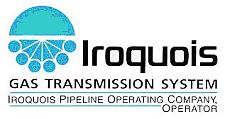What Transmission Pipelines Serve CT?
 Algonquin Gas Transmission (AGT
- Enbridge) originates in New Jersey where it connects to Texas
Eastern and runs from Danbury northeasterly to Thompson, with major spurs to
North Haven and New London.
Algonquin Gas Transmission (AGT
- Enbridge) originates in New Jersey where it connects to Texas
Eastern and runs from Danbury northeasterly to Thompson, with major spurs to
North Haven and New London.
Iroquois Gas Transmission System (IGT)
starts at the Canadian border, enters Connecticut at Sherman and runs southeast
through Milford, then offshore to Long Island.
Tennessee Gas Transmission (TGP -Kinder Morgan) starts in the Gulf, enters Connecticut in Greenwich, runs northeasterly leaving Connecticut in Suffield, with a spur from Massachusetts to Torrington.
 |
 |
 |
There are approximately 590 miles of transmission pipeline in Connecticut, including 16 miles in Long Island Sound. These pipelines range in size from 2” to 36”. Pressures range from 750 pounds per square inch gauge (psig) to 1,440 psig. There are 5 compressor stations in Connecticut with a total of approximately 110,300 horsepower.
To view maps of the interstate gas pipelines, visit www.npms.phmsa.dot.gov
Siting Information:
Interstate transmission pipeline siting is the responsibility of the Federal Energy Regulatory Commission. The Connecticut Siting Council is responsible for intrastate transmission pipeline siting. View the Connecticut Siting Council Application Guide for more information on the process. The Public Utilities Regulatory Authority is not involved in the siting of transmission lines.

